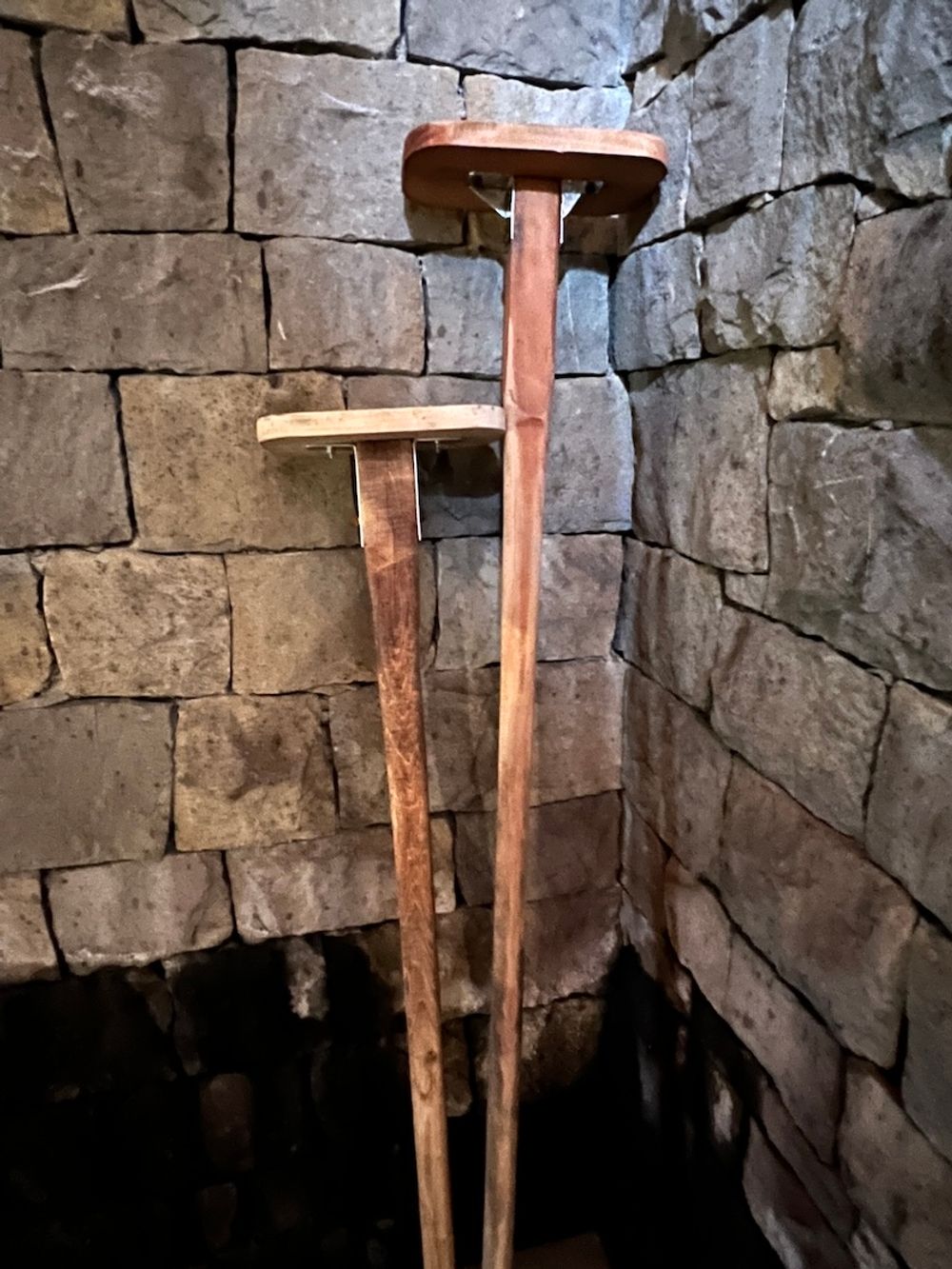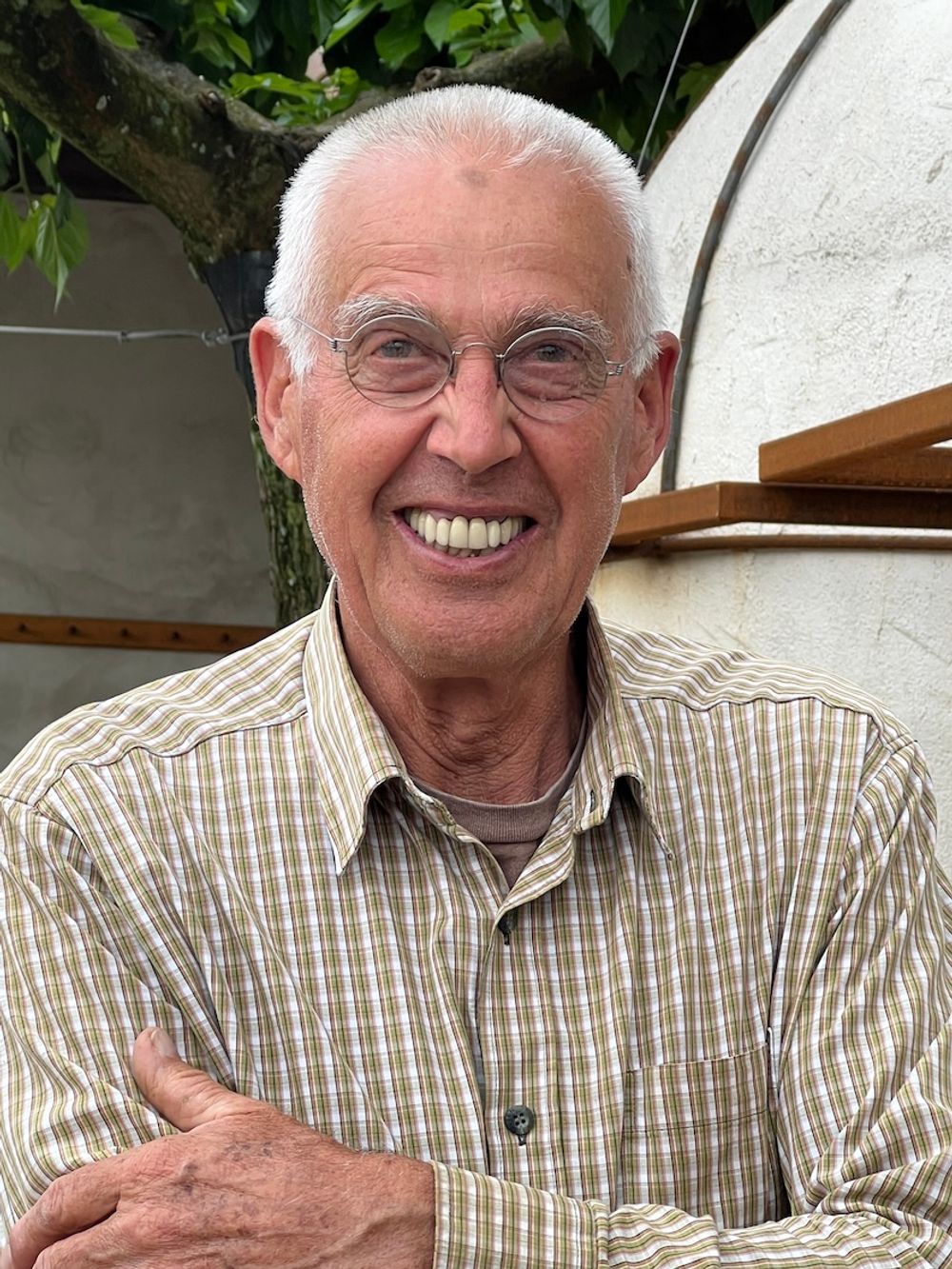
“I decided to make wine in the truest, most honest way possible,” Joško Gravner, May 2024
As first meetings go it was unusual to say the least. Arriving at Gravner’s winery, situated on a hill in Collio with a commanding view of the Slovenian border some 200 metres away, I was greeted by Joško Gravner the iconic winemaker who, without really saying hello, proceeded to clean my walking boots with an air hose.
Joško then reappeared some two hours later after I been shown around this compact family-run winery (with clean shoes) to drink wine and explain his philosophy of winemaking – speaking intensely for five minutes at a time while our translator desperately tried to keep up before Joško launched into yet another lengthy answer.
A strong man, with presence, Joško holds your gaze almost as if he is studying what you are made of. I can't imagine he suffers fools gladly. He might be aware of the world's adulation of him and the part he's played in the history of wine but never shows it or plays to it.
At our meeting he was particularly animated because the next day a shipment of glass amphorae was about to arrive – part of his 20-year study into how ageing wine in a particular style of glass container, previously only used by the pharmaceutical industry, could work with his wines. Gravner wines are normally released onto the market 7-8 years after harvest and it is anticipated that the wines in future will spend 2-3 years in glass out of the six years they would normally spend in large wooden cask.
That is what he thinks will happen but of course he doesn’t know. At 72 years of age Joško is still experimenting with winemaking on a fascinating journey that has taken many twists and turns, some directed by chance, others by his own tireless quest to make wines that are authentic, connected to the land and dictated almost entirely by natural cycles.
Not only are the grape varieties and yeasts indigenous, the winemaking techniques ancestral, and the agriculture biodynamic, but the wines’ production abides by the number seven – in the same way that the biological changes in the human body are dictated by a seven-year cycle – one year in amphora and six in large wooden casks.
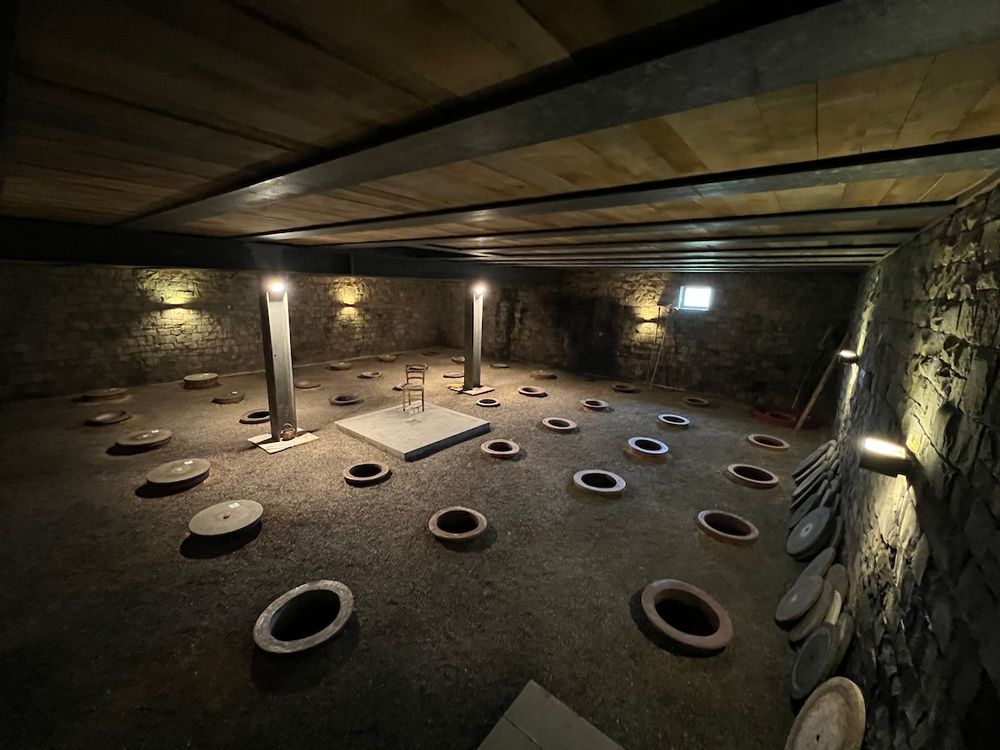
Vinification room at Gravner - as simple as it gets. Grapes come down a chute above where the chair is and are diverted into an empty qvevri
More specifically, Gravner wines are made with ‘four sixes’: six months on skins in amphorae, six months without skins in amphorae, six years in 700-litre old cask, and then six months in bottle. This is not strictly adhered to, of course, the wines being released only when Joško believes they are finally ready to drink. The Bianco 2011 we taste – a russet-coloured 100% Pinot Grigio – was released 10 years after harvest.
To release white wines that long after harvest takes no small amount of chutzpah and is commercially very brave indeed. But they work. And how.
“We are not in a hurry,” explains Mateja Gravner, “the wines are like children – they all learn to walk at different ages and each in their own way.”
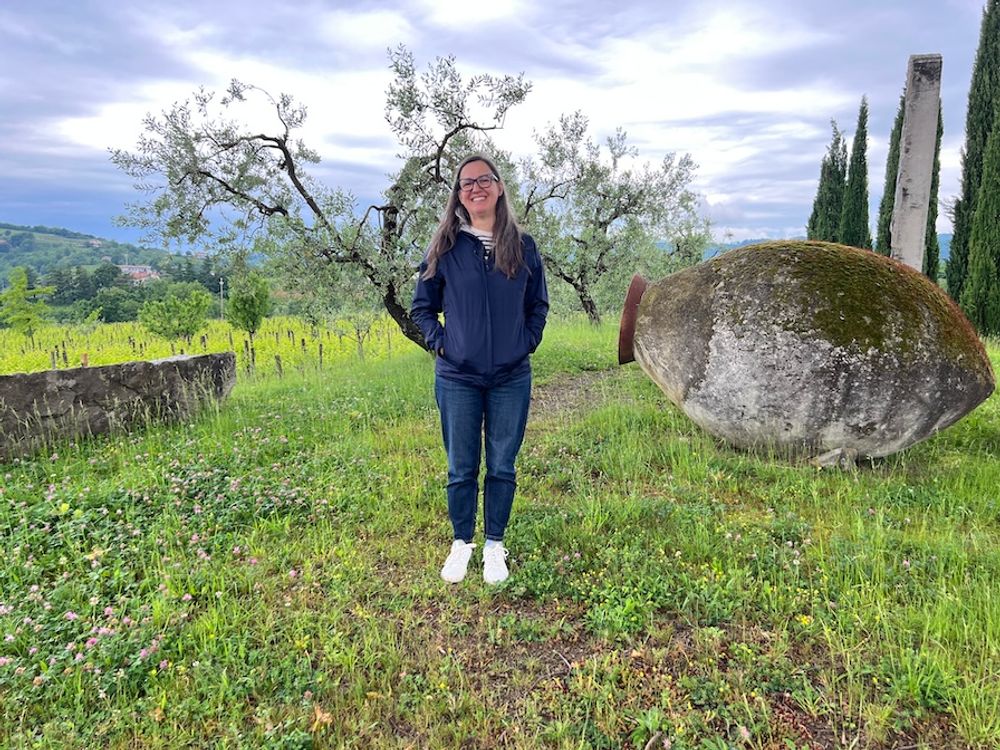
Doing everything apart from making the wine - Mateja Gravner pictured in front of Runk Vineyard.
Mateja is one of Joško’s daughters who joined the family business ten years ago having worked for large wine groups like Bertani. A trained oenologist “but determined never to make wine,” she is the sales and marketing side of Gravner, the tempering flipside of her father’s creative genius.
“Dad is chaotic while I am more organised,” she smiles, adding that when the wine is bottled, as far as Joško is concerned, his work is finished. You won’t catch him at ProWein anytime soon.
“People are more concerned about the market, but a good producer is never a good salesman,” Joško adds, “I don’t need to convince anyone that my wines are good.”
Ribolla Gialla and the disaster that spawned an epiphany
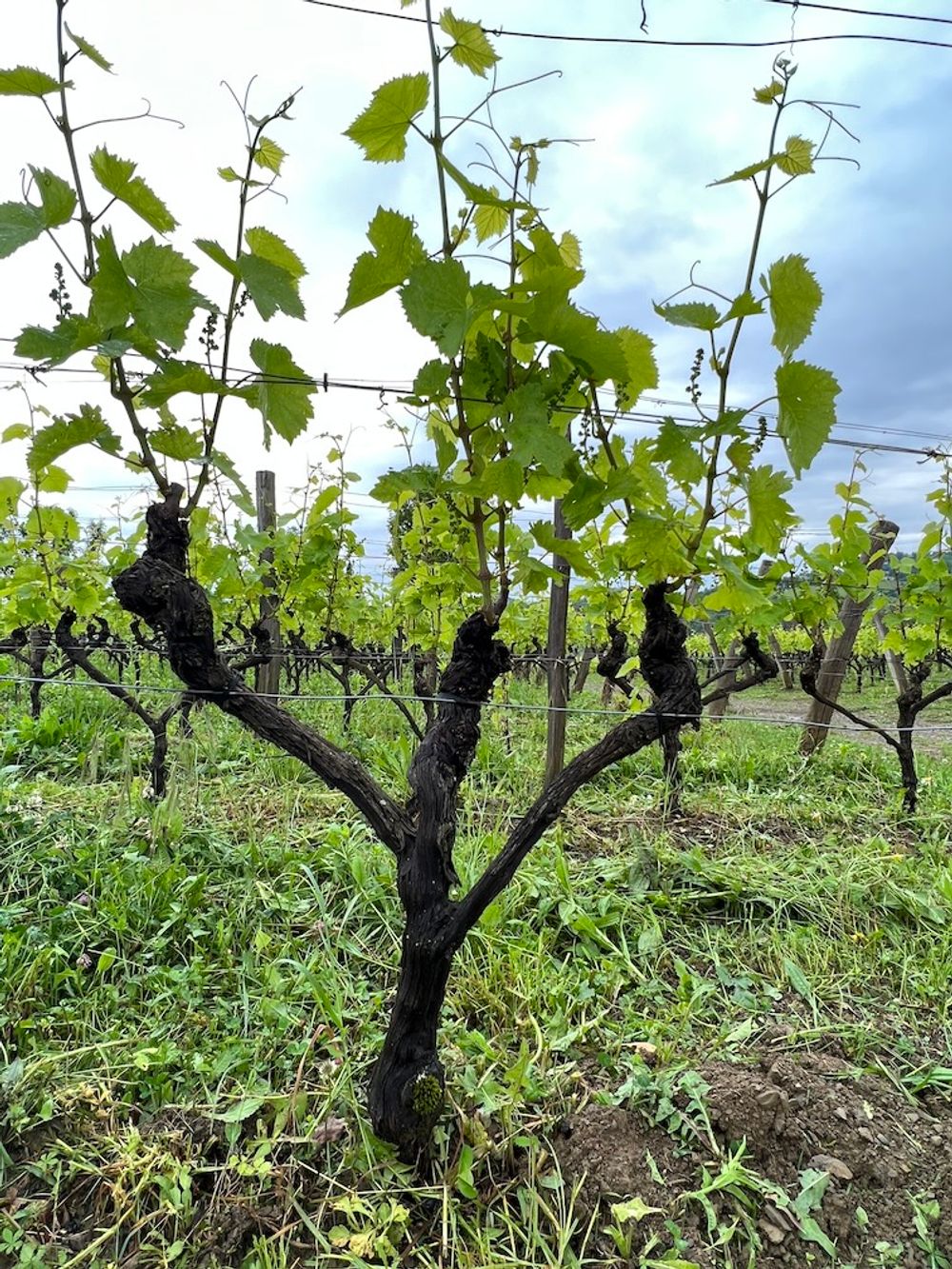
Ribolla Gialla vine in Runk - all these vines have a vertical-trellised head-prune system as suggested by Marco Simonit and Pierpaolo Sirch. Each vines is given 0.80 x 1.45m of space
Where the Gravner estate is in 2024 and where it was in 1973, when Joško first took over from his father and uncle, are polar opposites. Fresh from school, Joško rejected his predecessors’ way of doing things, installing steel vats and French barrels and making wines with both local and international varieties.
Joško explains how his father planted Chardonnay, Sauvignon Blanc, Pinot Grigio and Ribolla Gialla, produced wines from each and then started tasting them from cask:
“Only at the end we tried the Ribolla and my father smiled from ear to ear “this is our wine” he said.”
Ribolla Gialla is an indigenous grape variety that is late ripening, has high acidity, thick skins and can develop noble rot – it is a grape that is impressive in the mouth with crunchy skin and great flavour… it is also perfect for making complex skin-fermented wines. As a grape variety Ribolla Gialla is ubiquitous in Collio but is very often disappointing as a wine.
“With so many Ribolla Gialla wines the juice is without character and you forget them just after you have drunk them,” adds Mateja. “My father asked himself ‘why, when I am working with the best grape am I not getting the best wine?’ .”
Fate was about to help him find the answer.
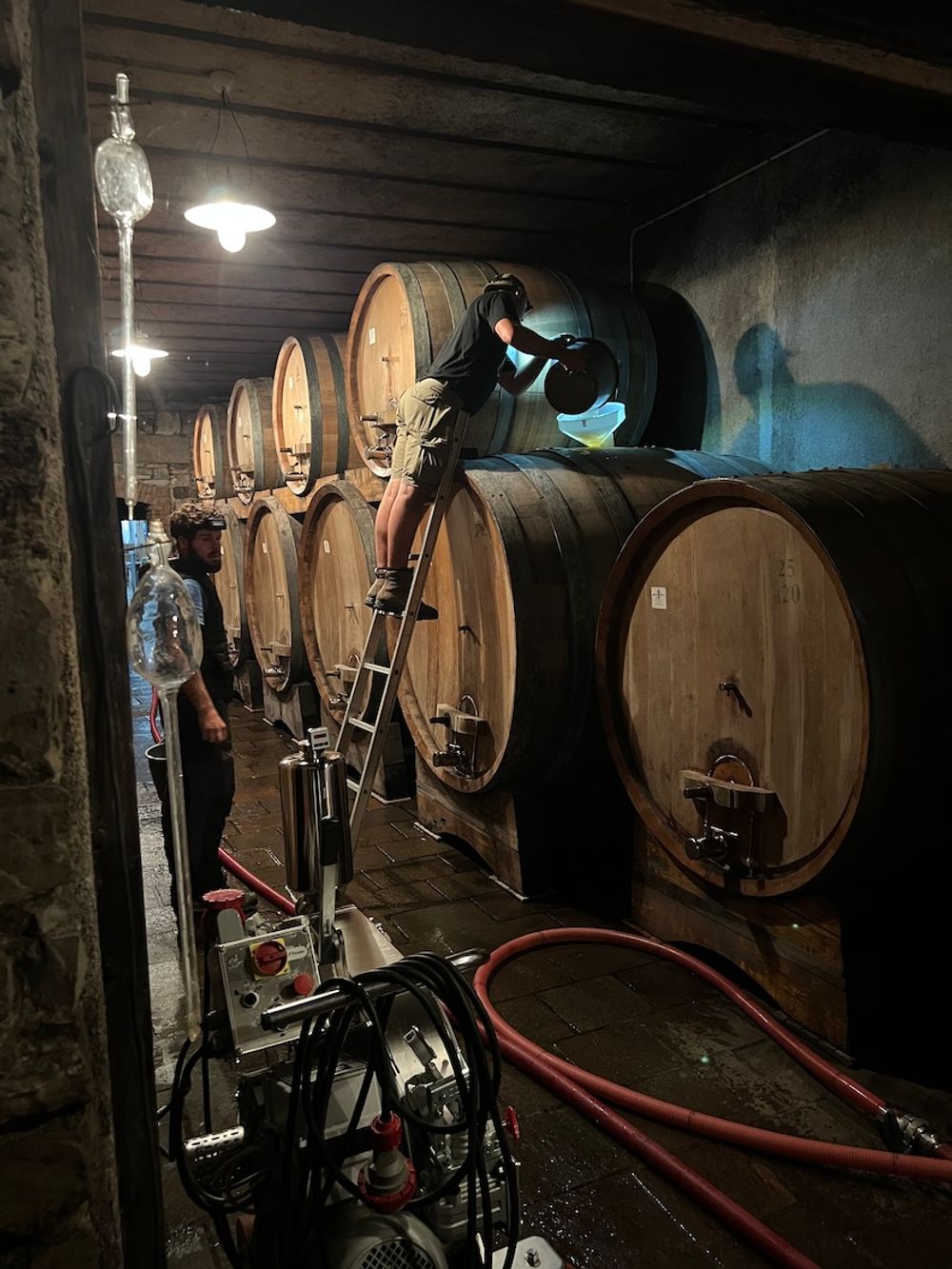
The entire winery, even during bottling, just needs 5KW of power. An Italian coffee machine uses 12KW.
Mateja continues: “In the past in the late 1980s and 90s, my father used to make wine in small barrels and steel tanks – they were unusual – white wines with two years ageing, not using selected yeasts. Ultimately, though, he was disappointed that he couldn’t taste Ribolla in the Ribolla wine. Then in 1996 we had bad hail and lost 95% of production – there were literally no leaves on the vines and we released no wines at all that year. Instead, with the fruit we had he experimented – fermenting with and without skins and with and without selected yeasts.”
The results were as clear as day – Joško abandoned all of the steel tanks and modern technology he had invested in, returned to his father’s teachings and in 1997 vinified his first wine on the skins in big wooden vats (tino) without temperature control. The old path had become the new.
As the author Il Cucchiaio D’Argento says in his seminal book on Gravner: “If you ask Joško what his wine is made of, he probably won’t respond. But in it there are grapes, very little sulphur, time, and thought.”
A ‘new style’ of wine
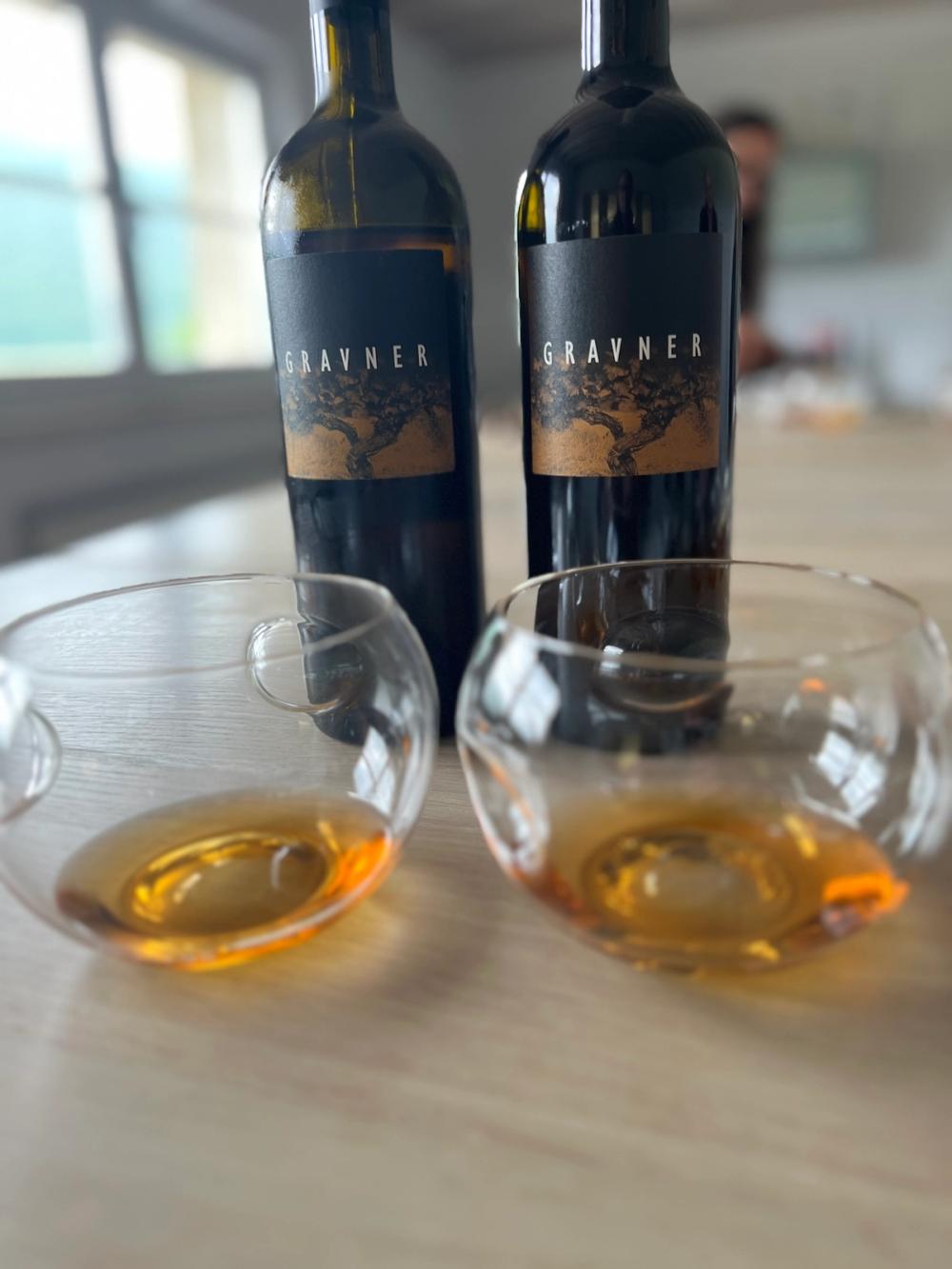
Two vintages of Ribolla Gialla with custom made Gravner glasses
“The market at this time was not asking for a new category of wine,” Mateja explains, “most wines were influenced by wine critics (it was important the way they could influence sales). But, at the same time, a lot of people were bored with the wines recommended by the critics – so there was a part of the market that was ready for a change – and the younger people went crazy for this new style which, until 2004 had no name… then David Harvey coined the term ‘orange’ wine. And the gap between the classic and the natural wine became wider which was a shame.”
You won’t catch Joško Gravner calling his wines orange, though, because he believes it implies that something is not fresh – he prefers ‘amber’ in the same way that wines in Georgia are made and referred to. He also calls the qvevri, he ferments and part ages his wines in, ‘amphora’ but that’s another story. What is unequivocal, though, is that with 47 qvevri (with a capacity of 1300-2400 litres) he has the largest number of any winemaker outside Georgia.
It was a trip to the Caucasus in 2000, where wine was originally invented, that convinced Joško to only vinify in qvevri made in the Kakheti region of Georgia. Once they had made their hazardous road journey to Italy they would be buried in the ground just like in Georgia.
It is easy to underestimate how difficult a visit this was back in Soviet occupation, before travelling he had to wait two years to get a visitor’s visa and when he did eventually gain entry it was with an armoured escort.
The vessels are a key part of the Gravner method and the room they’re housed in could not be simpler nor closer to nature. The sorting table in the room above is the shortest I have seen in any winery – so little needs to be removed before the bunches travel by gravity into the qvevri below.
And, as capacity has been stretched, so Joško has also buried a line of qvevri in an ‘amphora garden’, outside and open to the elements, another piece in this never-ending jigsaw of curiosity.
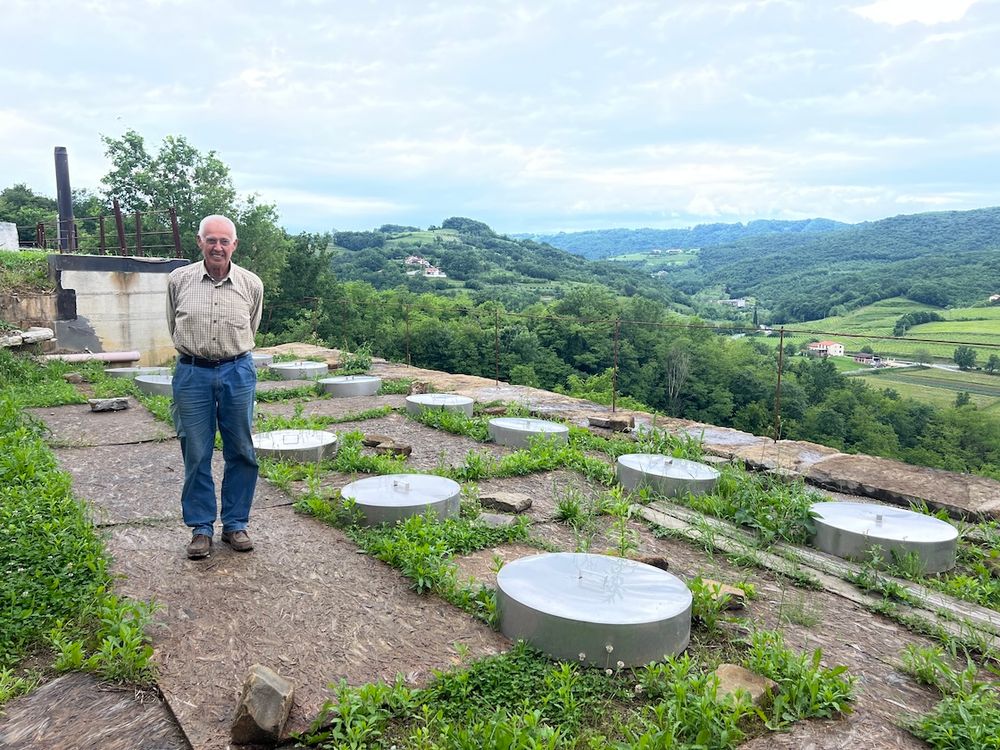
Joško Gravner with his 'amphora garden'. The house in the valley marks the Italian/ Slovenian border.
Time is the master
Following the epiphany in 1996, Joško started experimenting with the number of years that a wine really needs to be aged for before it is at its best. In 2005 Gravner released his first qvevri wine, the 2001, before he realised he needed to increase the élevage. He believes that a natural wine needs to be aged for at least three to four years so that it can ‘clean’ itself, but in reality the wines were far better with almost double that ageing time.
“I started testing with three, five, seven years and it was always getting better – but seven was the right number,” Joško says. It wasn’t until the 2007 vintage (34 years after he took charge of the winery) that he first released a wine that had been aged for seven years.
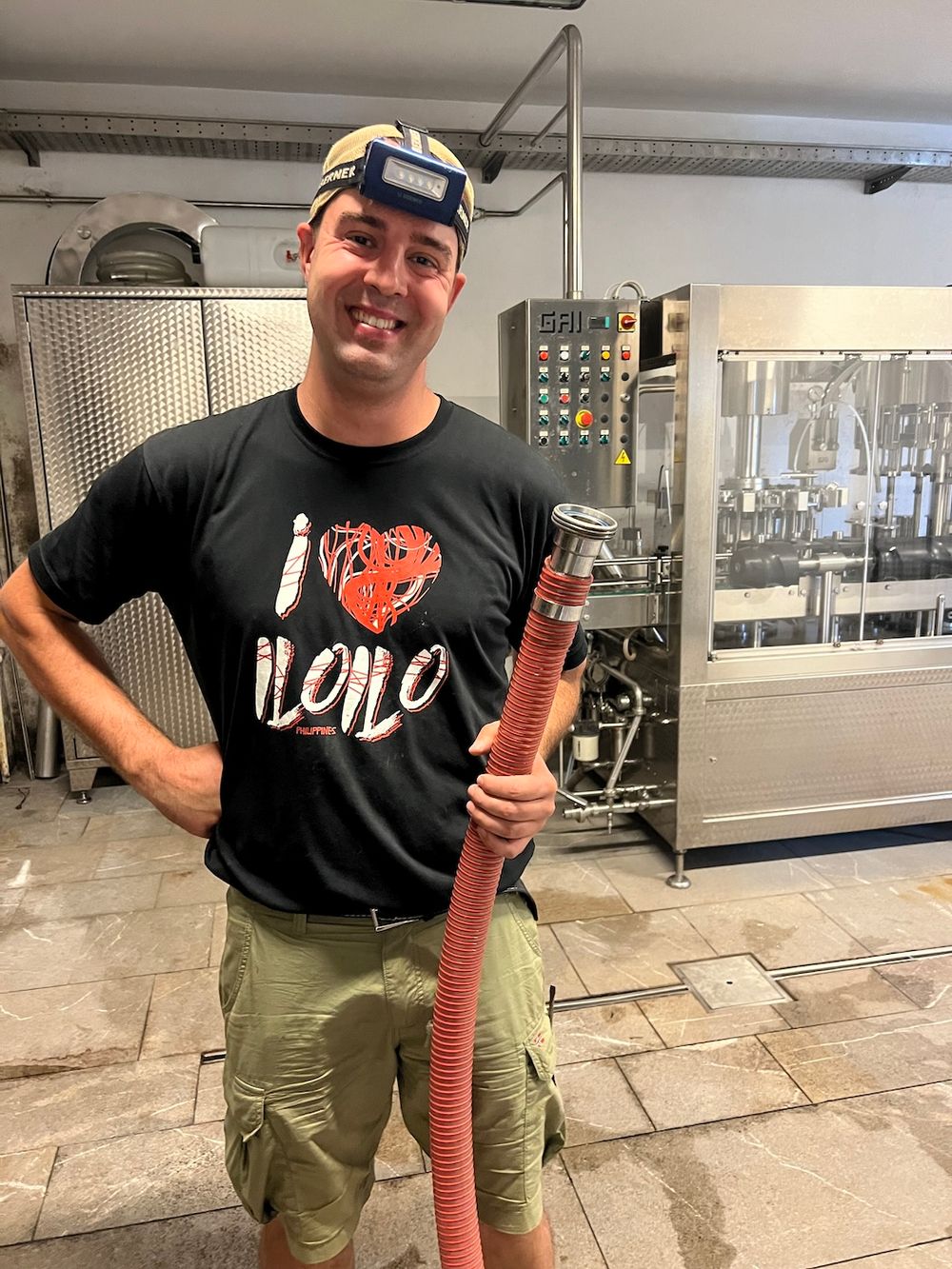
Not taking a holiday soon... "I like work" : Gregor, Mateja's son, works full-time with Joško in the vineyard and winery.
Before my visit Mateja had just returned from Georgia to visit the qvevri makers. Interestingly, when I asked for her views on contemporary Georgian wine, she said that cashflow is preventing winemakers there from ageing their amber wines for the length of time that is necessary.
“They are still having many problems. They need to be richer then they will be able to age their wines for longer,” she says.
Despite the tales of the many, many risks and sacrifices that the Gravner family has made to get where it is today, at least they have had the luxury to take those chances, Georgia still being on the long road to recovery.
“There is no quality without risk,” Joško says.
Winemaking from the soul and the soil
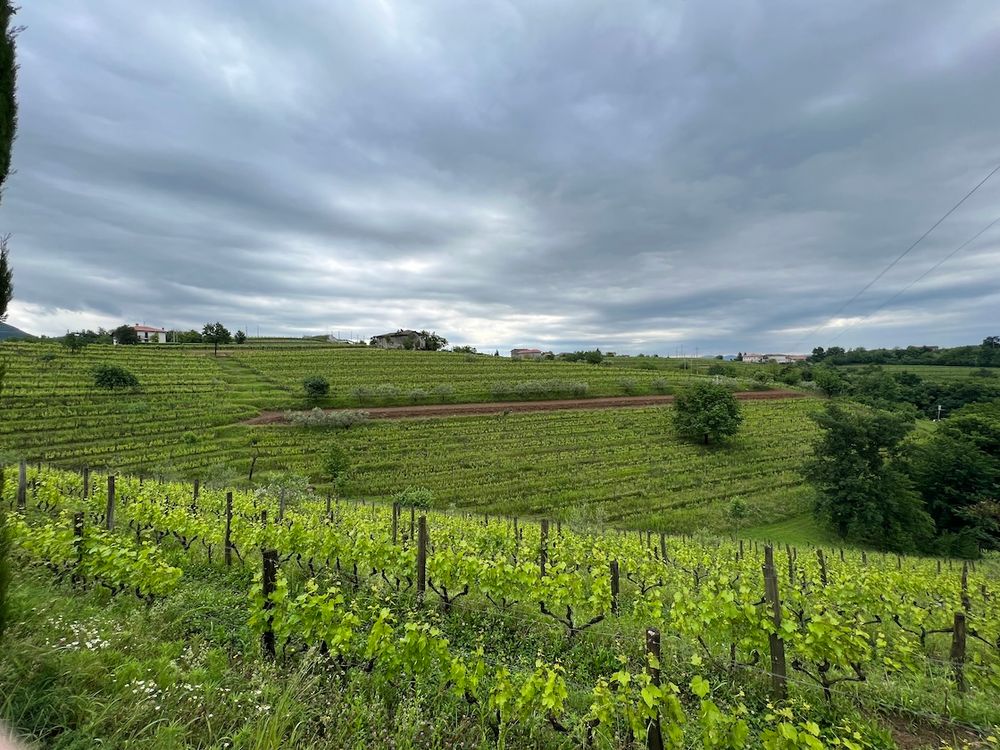
Runk vineyard - in 2003 the original vines were uprooted and Ribolla and Pignolo planted on new terraces as a way of streamlining the whole parcel
It is customary in a two-day press trip to visit one wine estate that the itinerary is eaten up entirely and relentlessly by visits to that one estate's vineyards, winery, tasting room and a handful of eateries. With this trip it speaks volumes that half of it was devoted to other forms of agriculture with no focus on Gravner at all.
Day One started with a 5km walk along the ‘Orange bench route of Oslavia' through other people’s vineyards until we got to Runk, one of the three Gravner-owned vineyards that cumulatively makes up their 32 hectares. The winery visit followed.

Each vineyard has a pond created to attract plants, insects and animals that have had their natural environment squeezed by intensive agriculture
Day Two started with a visit to a dairy farm, followed by a visit to a vinegar producer – we didn’t go back to Gravner nor taste Gravner wines at all on the second day.
The reason was to put Gravner into a context, to show how Oslavia where the winery is based – sitting on the border between Collio in the province of Gorizia, Italy and Brda, Solvenia – is an area where identity and birthright have been hard fought for over the past two centuries, the landscape littered with massive war memorials.
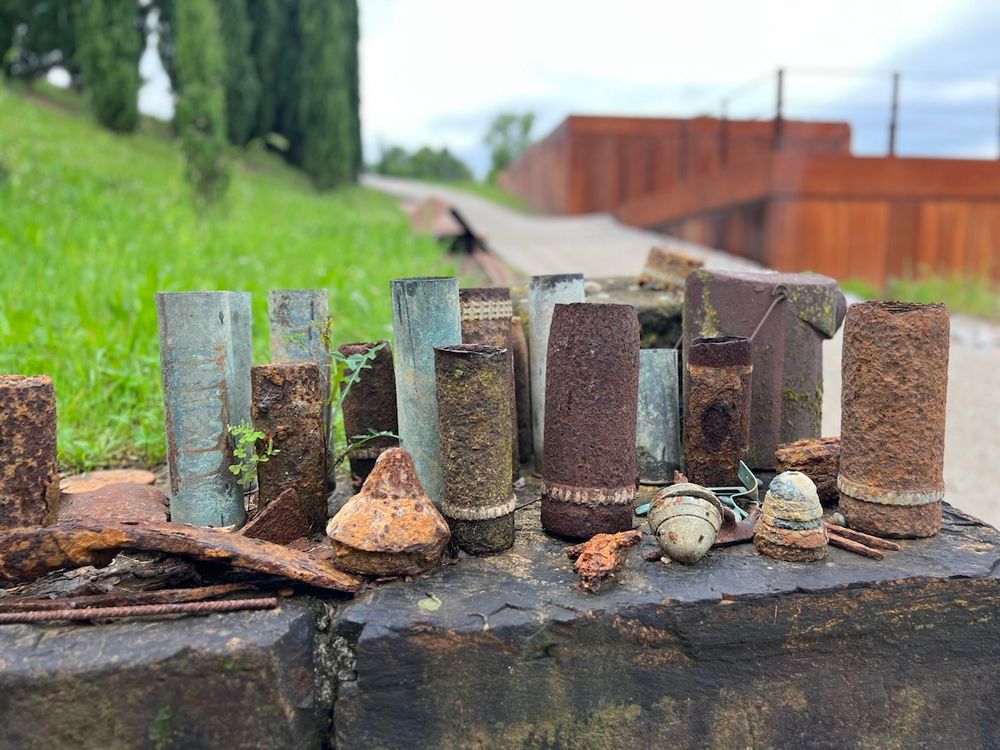
A grim reminder of the region's bloody past - shells unearthed in the vineyards
Being of a Slovenian minority in Italy, where newborns were not allowed ‘foreign’ names, Joško’s parents had to christen him Francesco, his official name. Mateja recounts stories where, as a child, she was led away from the nervous finger-trigger of an 18-year-old Yugoslavian soldier who had seen her and her siblings accidentally cross the border. “Father did not let us outside again all summer,” she says.
Mateja smiles when she remembers how the Gravners were always seen as a Slovenian family in Italy until they achieved their fame as one of Italy’s greatest winemakers. “Now we are seen as Italians.”
This is a land of defiance and pride.
Agricultural context
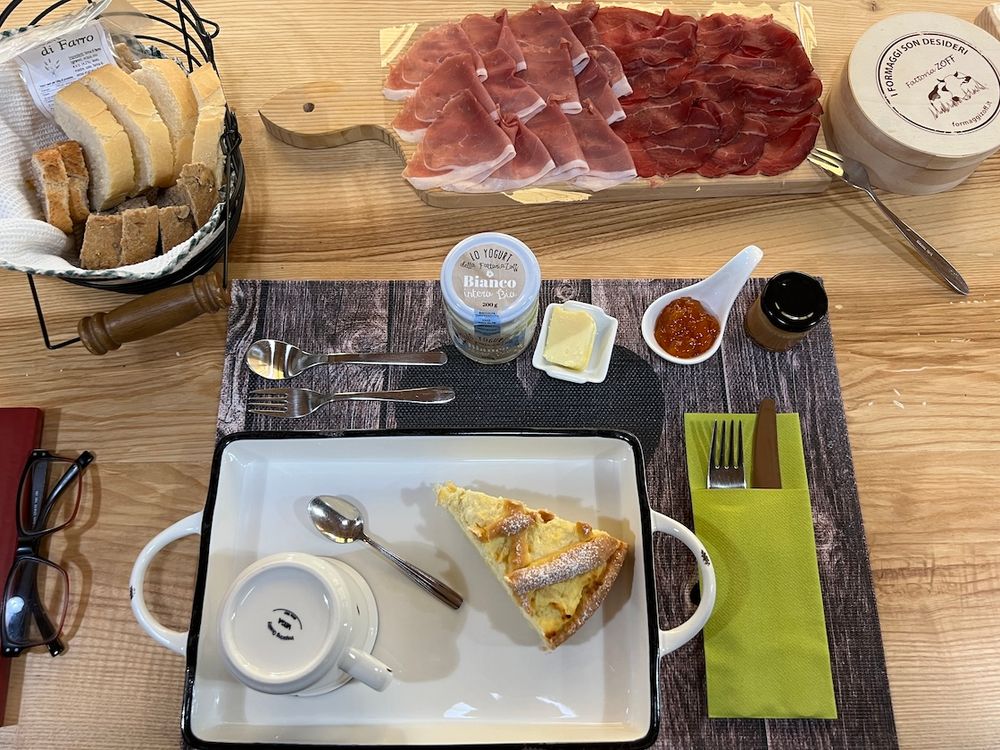
Local produce par excellence at Fattoria Zoff. The milk for the coffee had been inside a cow just 60 minutes previously
Visiting Fattoria Zoff for breakfast on Day Two to see a dairy herd and sample various local products was to show how, like Joško’s winemaking principles, integrity and respect for the land is key here amongst most farmers. Dairy cows normally have a shelf-life of four years, at this dairy they live for 15 years – they even had rotating back scratchers like a car wash to keep them happy.
La Subida where we stayed, is an agritourismo project with rewilded gardens, its Acetaia (where they make Sirk Della Subida vinegar) had vineyards with as much care and attention observed as would be for wine production.
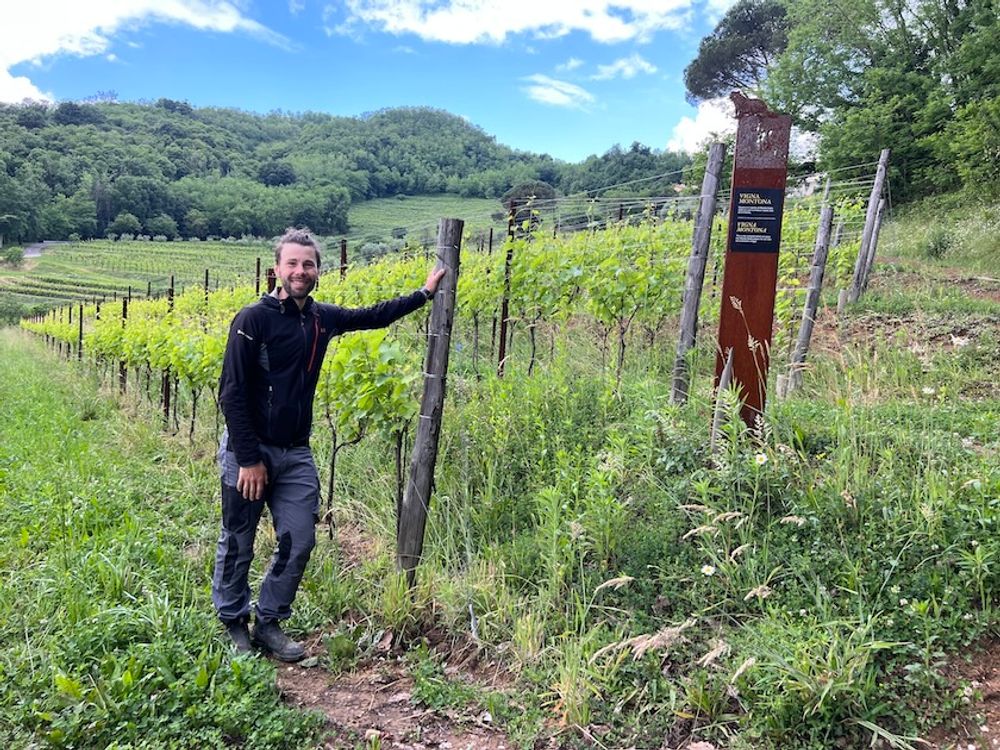
Mitja Sirk making world-renowned vinegars from Ribolla Gialla at nearby La Subida
When Joško says “I decided to make wine in the truest, most honest way possible” copy that to these other farmers who were all saying similar things about mindful agriculture, respect for the environment and pride in what they are producing and the region to which they belong.
The last word goes to Joško who has always believed in quality over quantity. “In 29 years I have never used chemicals (and don’t put ‘biodynamic’ on the label) I do it for the soil… something for my heart not the market.”
As for the wines….
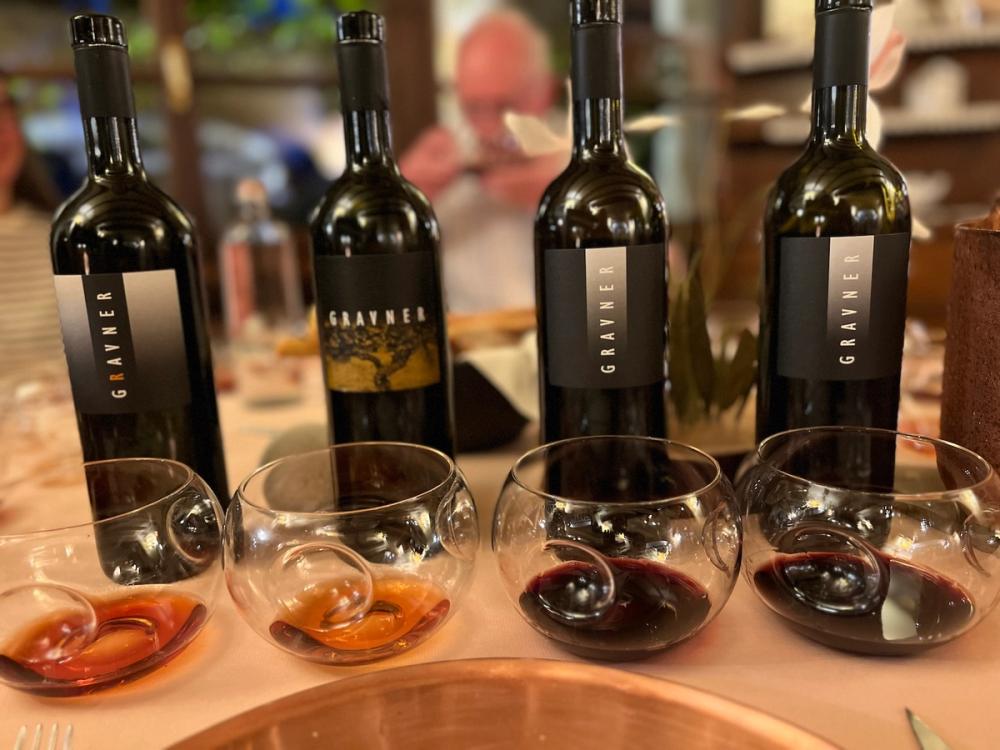
It is no exaggeration to say that Gravner makes some of the finest wines in Italy. The wines are unique, eschewing traditional pigeon-holing, they are both rugged and elegant, with a purity that is sometimes lacking in natural wines and have a complexity and smoother, more elegant mouthfeel than most amphora-aged/ Georgian amber wines.
In Part Two I will look at the wines we tasted on the trip and the food that was paired with them and how they were best served.
In the UK the wines are imported and sold through Raeburn Fine Wines.
